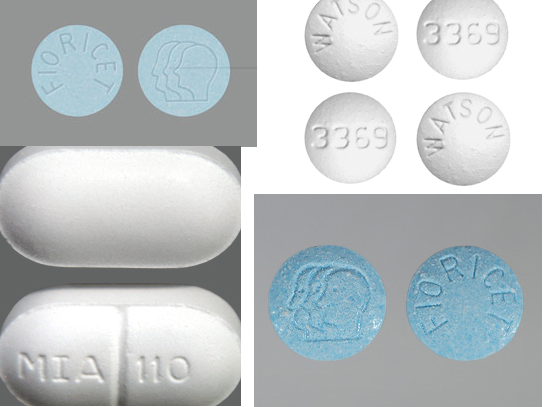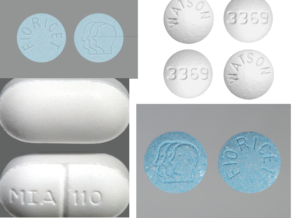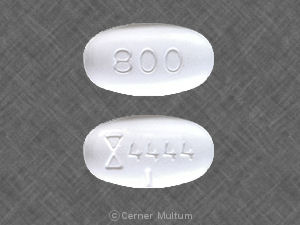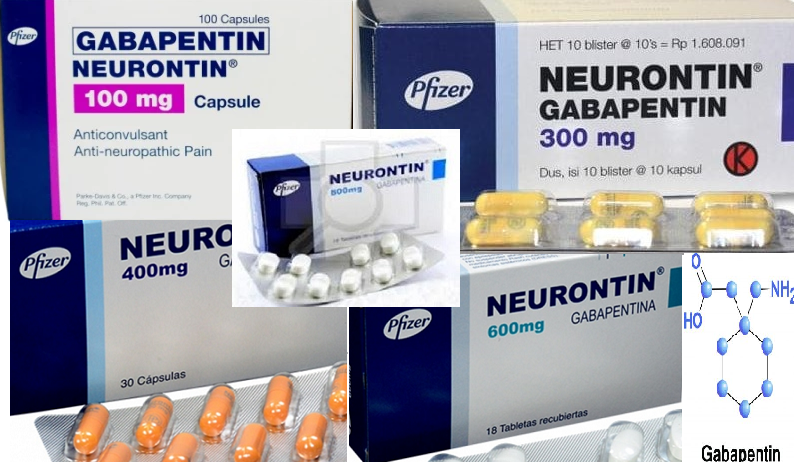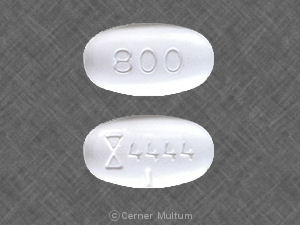180 tab Generic fioricet – $239
Fioricet is a drug providing combined anti-fever and analgesic action. It contains active components butalbital, acetaminophen and caffeine. The drug is designed for headache relief, including pain associated with migraine.
Fioricet may also be used for purposes not listed in this medication guide.
Acetaminophen has analgesic and antipyretic effects, which means that it will help you get rid of the pain and a fever. It has a half-life (an abbreviated amount of time a decaying substance takes to decrease in half) of about 35 hours. Butalbital comes from drugs named barbiturates. What it does is relax contracted muscles, which cause a headache. It has a half-life of about .25 to 3 hours.
The last component of Fioricet is caffeine, a stimulant for our nervous system, which produces constriction of the cerebral blood vessels and therefore relaxes the contractions in them, resulting in an improved blood flow. It has a half-life of 5 to 7 hours. These three components are distributed with 50 mg butalbital, 325 mg acetaminophen and 40 mg caffeine, in each tablet.
Fioricet and Tension Headaches
Tension headaches are described as headaches that are located in the back of the head, They are normally caused by tension in the body that is a result of a number of different things including overwork and stress. Tension headaches are the most common form of headache in adults. There are two basic types of tension headaches, chronic and episodic. Chronic tension headaches last for hours and may be continuous, meaning they occur more than 15 days a month and last for more than three months. Episodic tension headaches last only about 30 minutes and occur less than 15 days each month. Regardless of the type of tension headache you may be experiencing, there are a number of different remedies available. One thing you can try is fioricet.
Fioricet is a pain reliever available only by prescription through a doctor. It is primarily used to treat tension headaches that are caused by muscle contractions and is a combination of acetaminophen, butalbital, and caffeine. These three ingredients work together very well to help relieve the pain. Acetaminophen is a common pain reliever and fever reducer. Butalbital is a barbiturate that helps to relax the muscle contractions that are involved in the headache. The caffeine is a muscle stimulant that helps to relax muscle contractions in the blood vessels and improve blood flow in general. Butalbital may be habit forming, and this drug has been ranked as FDA Category C. This means that it is not known whether or not this drug will harm an unborn baby. Be sure to let your physician know if you are pregnant or planning to become pregnant. Also, it can pass into breast milk and therefore may harm a nursing baby.
If this drug sounds like it may be of benefit to you, be sure to get a complete physical exam by a physician as there may be some underlying medical conditions that could be impacted by the use of this medication. With a prescription, Fioricet is available at most pharmacies. You may also be able to purchase it online from a participating US pharmacy. Regardless of the course you choose, taking steps to control your tension headaches will put you well on the road to recovery.
Order Fioricet online and forget about headache issues
We all know how irritating can be when our head hurts. It can spoil the whole day and result in mistakes whatever is that we do. Headache can make you completely restless; you will lose focus and will not be able to perform your usual duties with usual efficiency. When it becomes frequent and usual it can completely destroy your life. So, you would like all help possible and cheap fioricet generic is just perfect helper with these issues. It helps with headache issues caused by muscle tension and it has also antipyretic effect. So, it can be used for fewer as well and it is pretty handy as it covers several frequent problems. Fioricet no prescription drug is complex drug and it has three major components. It contains butalbital, acetaminophen and caffeine. These components combined are pretty effective and you will be more than pleased with the results.
You can order fioricet online and it can be purchased through websites listed on this page. This drug needs prescription. Still, there are some possible side effects and it is always good idea to consult your doctor before using any drug, so it stays for cheap fioricet as well. There are certain cases in which it is best to avoid it. In case of severe kidney or liver diseases it is best not to use fioricet without prescription. It can as most of other drugs make further damage on the diseased organs and sometimes it may lead even to their complete failure.
BUY FIORICET
It is a bit addictive drug so it is best to keep its usage to the minimum. You shouldn’t use it if you aren’t suffering the pain. Also, if you used to abuse drugs or alcohol, it isn’t the ideal solution. Former drug addicts or alcoholics can be easily hooked up on it and they should avoid using it. Also, Fioricet drug is not ideal for breast feeding women. It is unknown what effect has on the unborn child so the doctor’s advice is definitely a must if you are pregnant. It leaves residues in mother’s milk and it can transfer to a suckling through it.
It is best to keep your Fioricet locked in the drug cabinet as it can be very dangerous for children. They are often nosy and will swallow pills so keep it away from them. Increased dosages are also dangerous for the adults and you should keep an eye on dosing it pretty closely. Also, Fioricet drug can be dangerous to drug addicts so you shouldn’t give it to any person for who you know that he or she abuses drugs.
Fioricet for chronic tension headaches treatment
ADDITIONAL INFORMATION: IP YOUR HEADACHE SYMPTOMS do not improve or if they become worse, contact your doctor. DO NOT SHARE THIS MEDICINE with others for whom it was not prescribed. DO NOT USE THIS MEDICINE for other health conditions. KEEP THIS MEDICINE out of the reach of children. IF USING THIS MEDICINE FOR AN EXTENDED PERIOD OF TIME, obtain refills before your supply runs out. The information in this monograph is not intended to cover all possible uses, directions, precautions, drug interactions, or adverse effects. This information is generalized and is not intended as specific medical advice. If you have questions about the medicines you are taking or would like more information, check with your doctor, pharmacist, or nurse.
Fioricet for Toothache
THIS MEDICINE CONTAINS ACETAMINOPHEN. Do not take additional acetaminophen for pain or fever without checking with your doctor or pharmacist. Ask your pharmacist if you have questions about which medicines contain acetaminophen. Acetaminophen may cause liver damage. If you drink alcohol on a daily basis, do not take this medicine without first discussing it with your doctor. Alcohol use combined with acetaminophen may increase your risk for liver damage. Pain medications work best if they are used as the first signs of pain (or first signs of migraine) occur. If you wait until the pain has significantly worsened, the pain medicine may not work as well.
BEFORE YOU BEGIN TAKING ANY NEW MEDICINE, either prescription or over-the-counter, check with your doctor or pharmacist. FOR WOMEN TAKING BIRTH CONTROL PILLS: this medicine may decrease the effectiveness of your birth control pills.
To prevent pregnancy, use an additional form of birth control while you are taking this medicine. IF YOU PLAN ON BECOMING PREGNANT, discuss with your doctor the benefits and risks of using this medicine during pregnancy.
THIS MEDICINE IS EXCRETED IN BREAST MILK. DO NOT BREAST-FEED while taking this medicine. POSSIBLE SIDE EFFECTS: SIDE EFFECTS, that may go away during treatment, include drowsiness, dizziness, lightheadedness, or nausea. If they continueor are bothersome, check with your doctor. If you notice other effects not listed above, contact your doctor, nurse, or pharmacist.
Fioricet dosing information
Usual Adult Dose of Fioricet for Headache:
Acetaminophen 300 mg, butalbital 50 mg, and caffeine 40 mg:
1 or 2 capsule(s) orally every 4 hours as needed. Maximum daily dose: 6 doses.
Acetaminophen 325 mg, butalbital 50 mg, and caffeine 40 mg:
1 or 2 tablet(s), capsule(s), or tablespoonful(s) orally every 4 hours.
Maximum daily dose: 6 doses
Acetaminophen 500 mg, butalbital 50 mg, and caffeine 40 mg:
1 tablet or capsule orally every 4 hours.
Maximum daily dose: 6 doses
Acetaminophen 750 mg, butalbital 50 mg, and caffeine 40 mg:
1 tablet orally every 4 hours.
Maximum daily dose: 5 tablets
Usual Pediatric Dose of Fioricet for Headache:
12 years and older:
Acetaminophen 300 mg, butalbital 50 mg, and caffeine 40 mg:
1 or 2 capsule(s) orally every 4 hours as needed. Maximum daily dose: 6 doses.
Is Fioricet Addictive?
Although it’s only a prescription headache medication, Fioricet has the potential to cause addiction. If a person follows their prescription guidelines and uses the medication correctly, the risks of addiction are low. However, if someone takes too much Fioricet, they may develop tolerance to its effects. A person with tolerance to a certain dose of Fioricet will require higher doses of the medication to alleviate their headaches.
When a person with tolerance starts to take more Fioricet, possibly by obtaining more prescriptions, they may eventually become dependent on it. In other words, they may feel unable to get through the day without taking Fioricet, and if they stop, they will experience symptoms of withdrawal. These symptoms arise because their body has grown accustomed to Fioricet in high doses.
If a Fioricet-dependent person attempts to weather withdrawal alone, it’s likely they will take Fioricet again just to relieve the symptoms. This is a hallmark characteristic of addiction. Anyone who compulsively abuses Fioricet to avoid withdrawal likely has an addiction to Fioricet. Additionally, people with an addiction to Fioricet will experience cravings for the medication which further compel them to keeping using it.
Moreover, the ingredient butalbital is an addictive substance in its own right. Butalbital can cause someone to “get high” because it’s a central nervous system depressant. Since butalbital is part of Fioricet, it is possible for someone to abuse Fioricet as a recreational drug. At high doses, Fioricet can intoxicate a person in a manner similar to alcohol. People who abuse Fioricet for this purpose have as much of a risk of developing an addiction as they would have if they repeatedly use an illegal drug.
The Symptoms of Fioricet Withdrawal
In most cases, Fioricet withdrawal lasts anywhere from 8 hours to three days after the last dose. Withdrawal is the biggest obstacle to overcoming dependence on Fioricet, which is why rehab centers provide detox programs so that people can safely undergo the withdrawal cycle without the risk of relapse. It is best to undergo withdrawal under medical supervision because some withdrawal symptoms are dangerous.
Rebound headaches are the most common symptoms of Fioricet withdrawal. Other symptoms of withdrawal include:
-
-
- Anxiety
- Dizziness
- Insomnia
- Muscle spasms
- Nausea and vomiting
- Rapid emotional changes
- Seizures (in rare cases)
- Tremors
- Weakness
-
Fioricet (butalbital/acetaminophen/caffeine) has been around forever and is used by many for the treatment of chronic migraine or tension headaches. It is a mixture of a barbiturate, Tylenol (acetaminophen) and caffeine.
Now, many formularies are no longer covering Fioricet capsules. For those of you who have relied on it for years, this (understandably) may make you nervous.
Well, it turns out it doesn’t really work that well—and there are much better options out there.
-
- Fioricet and Fioricet with Codeine are not as effective for acute migraine as newer medications. There isn’t any evidence that shows that barbiturate-containing meds (the butalbital in Fioricet) help for migraine treatment. In fact, the use of Fioricet with Codeine often results in chronic migraine and a “medication overuse headache.”
- NSAIDS. Start with these instead. There is good evidence that nonsteroidal anti-inflammatory drugs—ibuprofen, naproxen, and others—work well for the treatment of acute migraine.
- Triptans. Imitrex (sumatriptan), Maxalt (rizatriptan), Relpax (eletriptan), and Frova (frovatriptan) are examples. Used alone or in combination with an NSAID, triptans work well for moderate to severe headaches that aren’t relieved by NSAIDs alone. Wondering which to choose? They generally work the same but you may notice fewer side effects with one over the other. Cost can also be an issue so you’ll want to pick a triptan that is covered by your insurance plan. It’s also a good idea to check GoodRx to see if the cash or discount price beats your co-pay.
- Adding a nausea medication. For folks with moderate to severe migraine accompanied by nausea or vomiting, adding Reglan (metoclopramide) , Zofran (ondansetron) or Compazine (prochlorperazine) also helps.
Fioricet Overdose Symptoms and Treatment
A tablet of Fioricet contains 325 milligrams of acetaminophen, 50 milligrams of butalbital and 40 milligrams of caffeine. Acetaminophen is a pain reliever, butalbital is a barbiturate, and caffeine is a stimulant. The combination of drugs used in Fioricet is also sold under other brand names such as Alagesic, Dolgic, Esgic and Zebutal. All the active ingredients in Fioricet are potentially addictive, especially butalbital.
Physicians usually prescribe Fioricet for headaches caused by muscle contractions. They may also prescribe it for migraine headaches, although the Food and Drug Administration has not indicated it for this purpose. The typical adult dose of Fioricet is one to two tablets every four hours, not to exceed six tablets every 24 hours.
Common Overdose Symptoms
Acetaminophen relieves pain by inhibiting prostaglandin synthetase enzymes, and it has a half-life of no more than three hours. Butalbital depresses the central nervous system and has a half-life of about 35 hours. Caffeine causes the cerebral blood vessels to constrict and has a half-life of about six hours. Mild Fioricet overdose symptoms include the following:
-
-
- Abdominal aches
- Dizziness
- Fatigue
- Euphoria
- Intestinal problems
- Sedation
- Shortness of breath
- Vomiting
-
Butalbital can also cause Stevens-Johnson syndrome in rare cases, like all barbiturates. This syndrome is a life-threatening skin condition.
Did You Know?
Fioricet with codeine is a combination drug that also adds 30 milligrams of codeine to each tablet.
Withdrawal from Fioricet
“Withdrawal symptoms of Fioricet occur when you stop taking this drug after becoming dependent upon it.”Withdrawal symptoms of Fioricet occur when you stop taking this drug after becoming dependent upon it. A physician will typically reduce your dosage slowly in order to minimize the withdrawal symptoms, rather than abruptly discontinuing your usage of Fioricet. You may also receive medication to help you taper off Fioricet. Withdrawal symptoms usually begin between 8 and 36 hours after your last dose and may last up to a week or two. Signs of an overdose on Fioricet include the following:
-
-
- Anxiety
- Breathing trouble
- Raised blood pressure
- Elevated body temperature
- Delirium
- Tiredness
- Headaches
- Increased heart rate
- Nausea
- Ringing in the ears
- Shaking
-
Available Treatment Options
In the event of an overdose on Fioricet, call 911 immediately. Emergency treatment is critical to ensure the person remains stable. After the immediate overdose risk is averted, subsequent care is essential to effectively address the drug abuse or addiction issue.
Fioricet rehab treatment normally begins with the detoxification phase. This process reduces the patient’s dosage of Fioricet until they are no longer taking the drug at all. The detoxification phase of the treatment eliminates the patient’s physical dependence on Fioricet. The remainder of a treatment program for Fioricet addiction deals primarily with the psychological aspect of the addiction.
